The Layout -
The layout of any motherboard is important. Even simple mistakes in component placement or the signal traces can cause major issued in performance and stability. With the ATX form factor we find that this is even truer; the devices we drop onto them demand more and cleaner power while the signal speeds push faster and faster. The Z97-A is a standard ATX motherboard with almost the same typical layout we have seen a thousand times. It does follow the same pattern of CPU/Power/Memory on the top and peripherals on the bottom, but Asus has made some interesting departures that make the Z97-A noteworthy.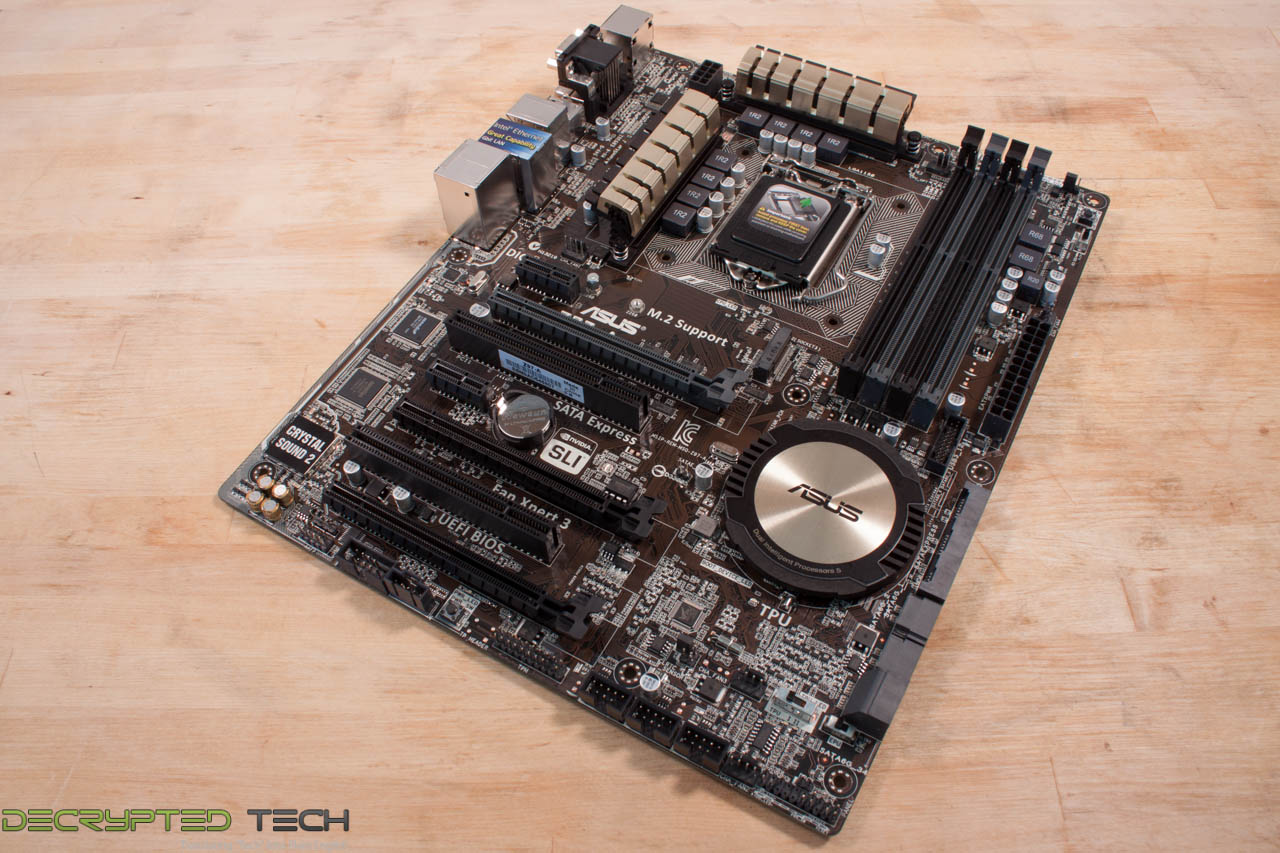
Kicking things off at the upper left corner of the board we find things as they usually are. 4-DIMM slots, 24-Pin power header, Fan headers and USB 3.0 header. Where things are a little different is that the USB 3.0 header has been moved back a little from the edge of the board while the 4-pin PWM fan header has been moved to the edge. This gives you a little more room to bend the much thicker USB 3.0 cable Vs the Fan cable. Moving up Asus has dropped in their EZ-XMP switch and MemGo Button. The EZ-XMP switch will enable the primary XMP profile on the Memory you use. If there are more than one available on your memory choice you might not want to use this as it will take the first option and use that one. In some cases this might be much lower than what your memory is capable of.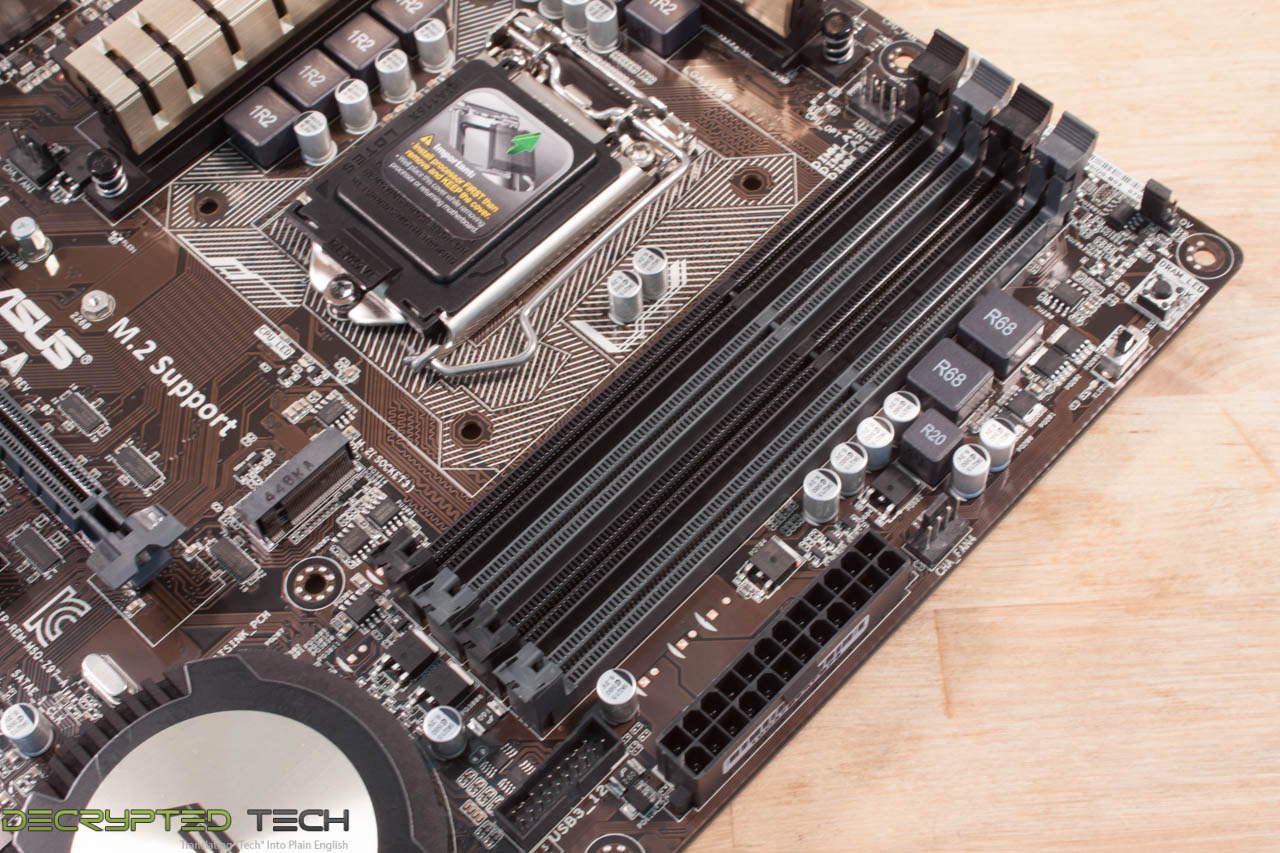
Moving around to look at the power regulators and the CPU zone we find and interesting design and layout. Asus has clearly marked off and protected the area around the CPU. This should make installing a cooler a little simpler. Believe it or not those little lines actually help prevent accidentally cutting a trace when a screw driver slips. You can also see the detail they put into the tracing layout on the Z97-A it is clean and efficient. A good trace layout can save you a lot of headaches when you are tuning for performance.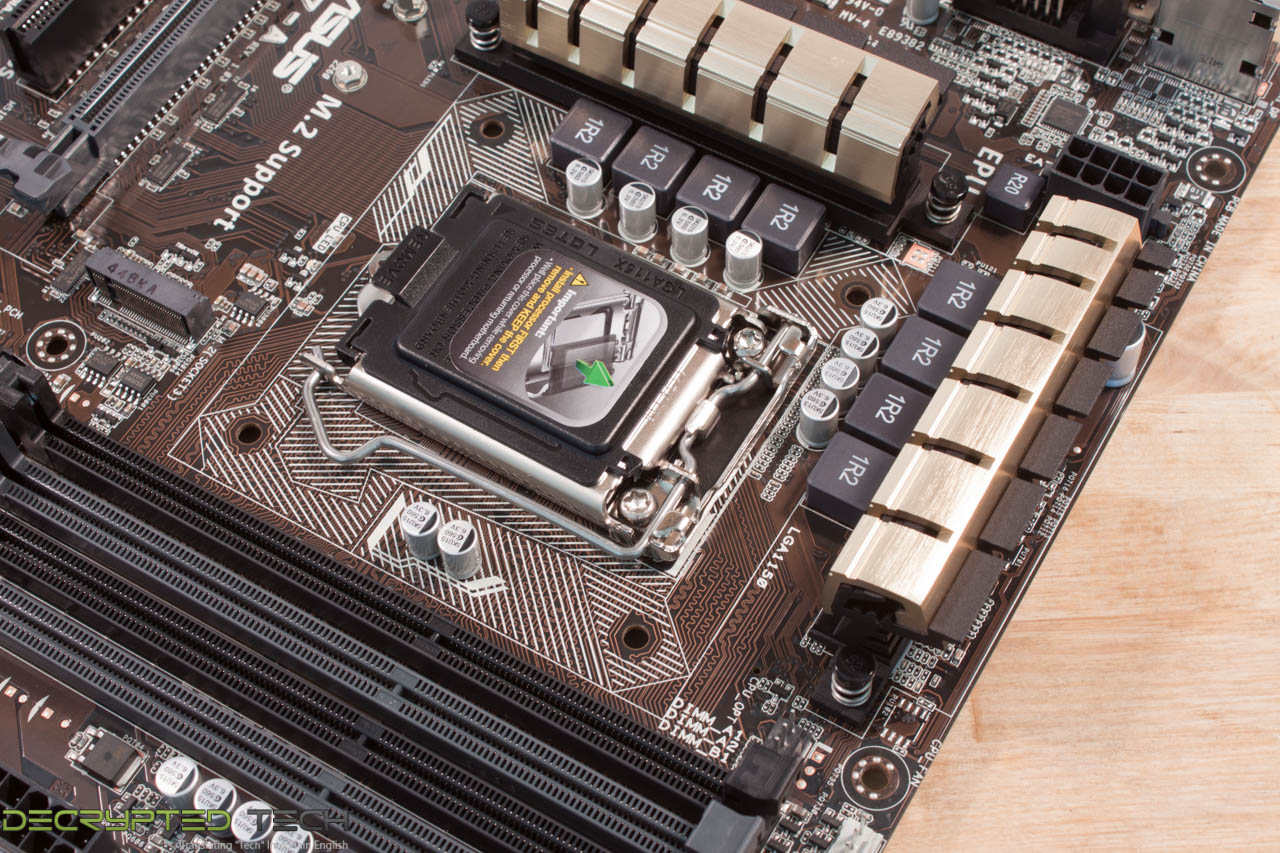
If you have read any of my motherboard reviews you know that the 8-Pin aux power connector is one of my pet peeves. On most boards it is very inconveniently located and guaranteed to be in a bad place. On the Z97-A it looks like Asus offset it a bit to give you pretty good clearance to this connector We would still recommend an adapter though.
Moving down to the lower half of the board we find the peripherals slots. Asus has changed the usual order of slots and dropped an x1 slot in first. This moves the first x16 slot (the only slot that is x16 mechanical and electrical) down to give room for the M.2 SATA slot.
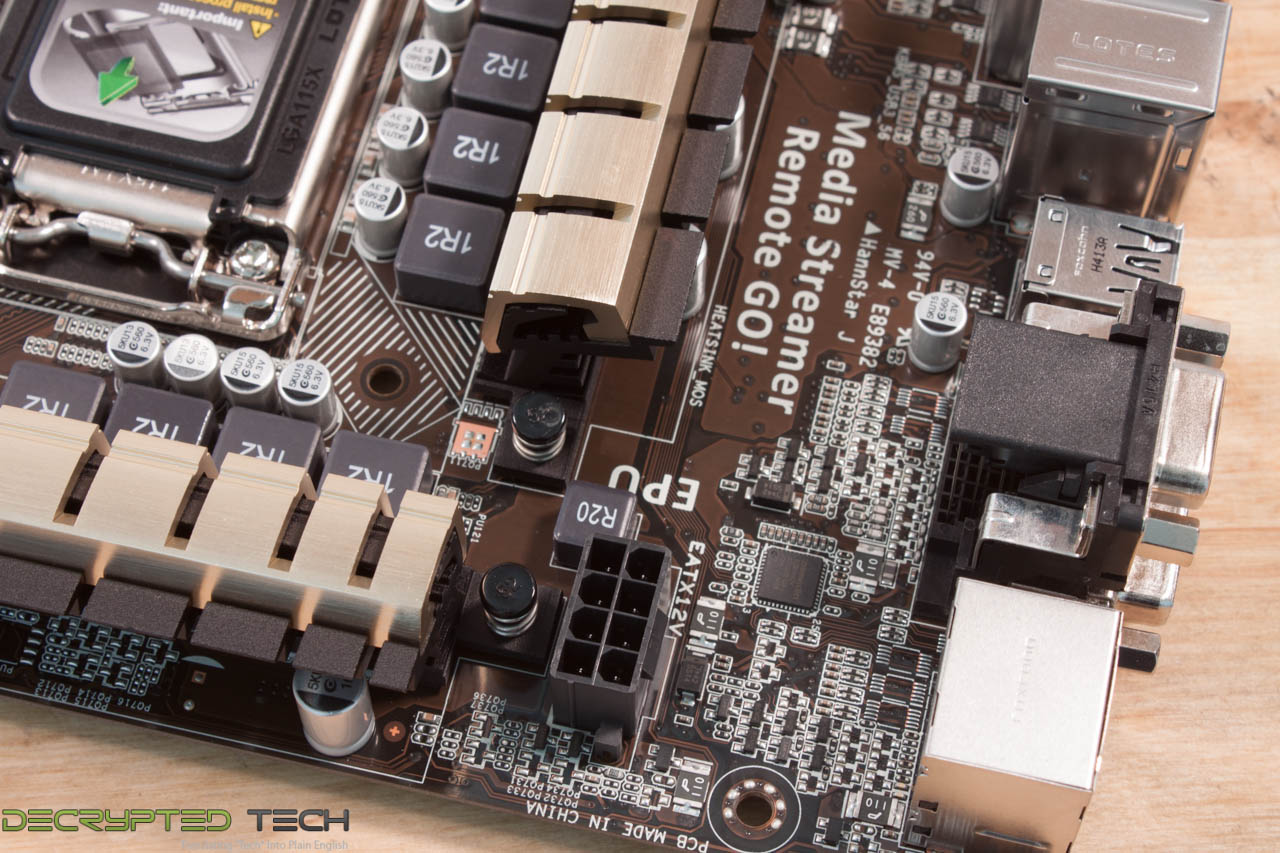 |
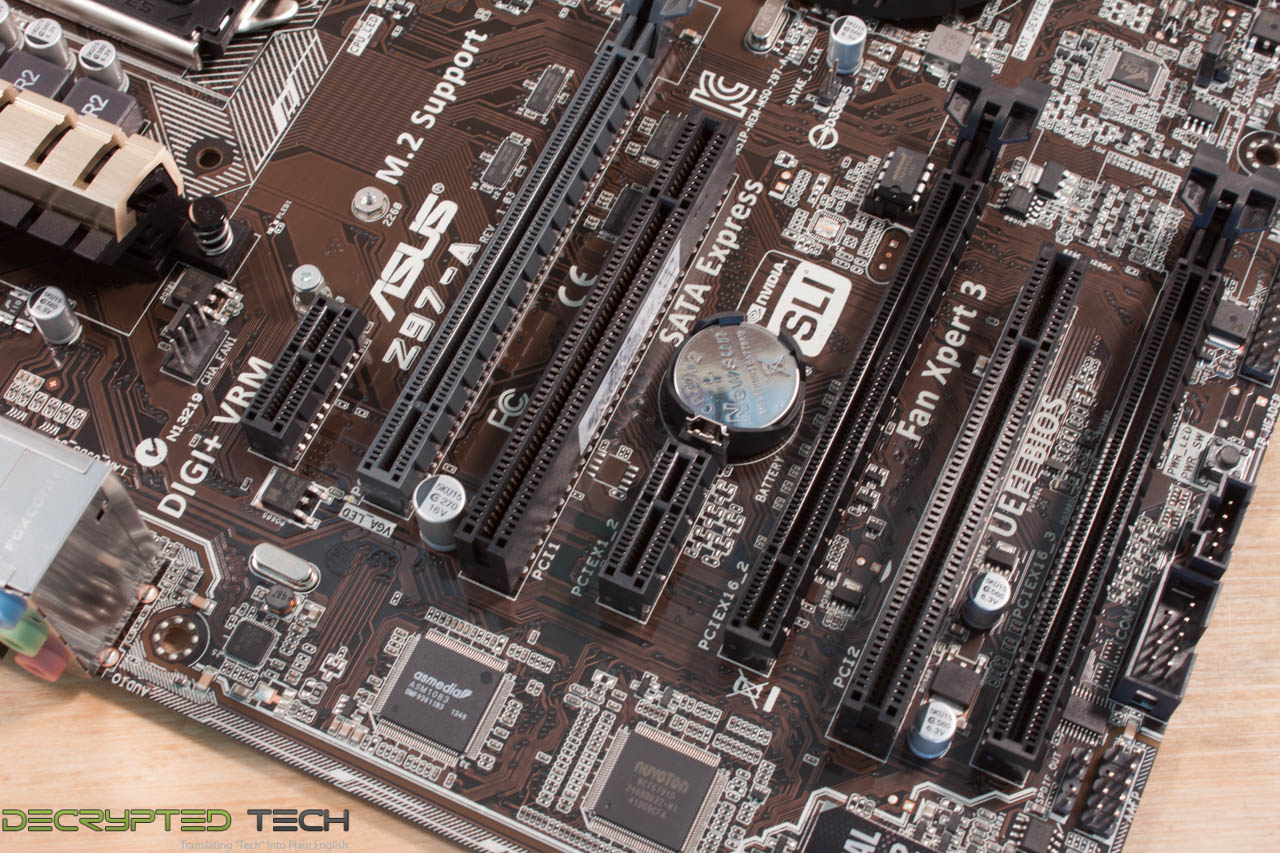 |
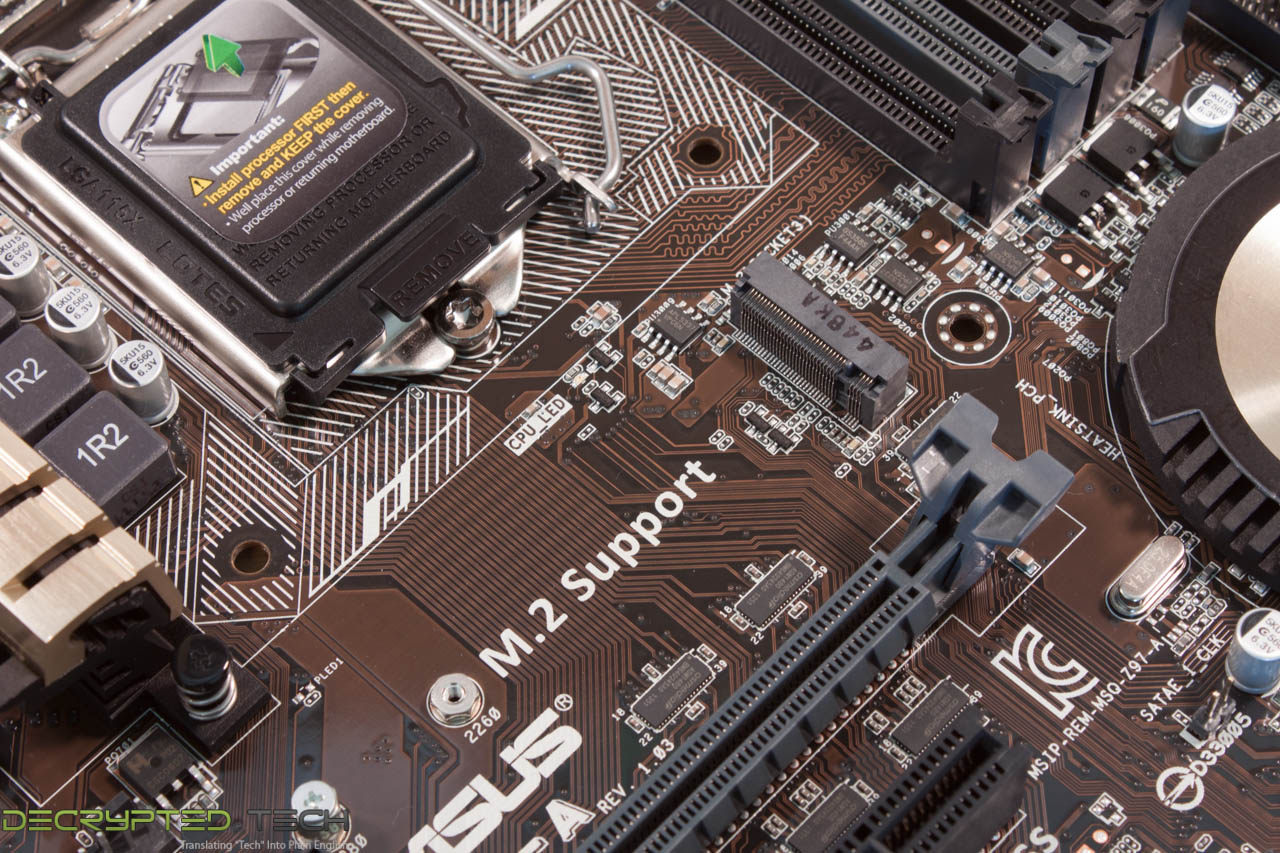 |
Moving down to the lower right corner of the board we find the audio chip. This is Asus’ Crystal Sound 2 and it is using the same design that used to only be found on the ROG line of boards. This includes using high quality audio caps for filtering and an amp to give you that extra power. Asus has also segmented this area of the board to keep signal interference to a minimum. It is a very clean design so that you get the best audio quality you can from this board.
Along the lower edge of the board we see some of the more common header types and control options. One thing that stands out is the Thunderbolt headers between the COM port and power button. This is a fairly new feature from Intel and has some great potential for the future.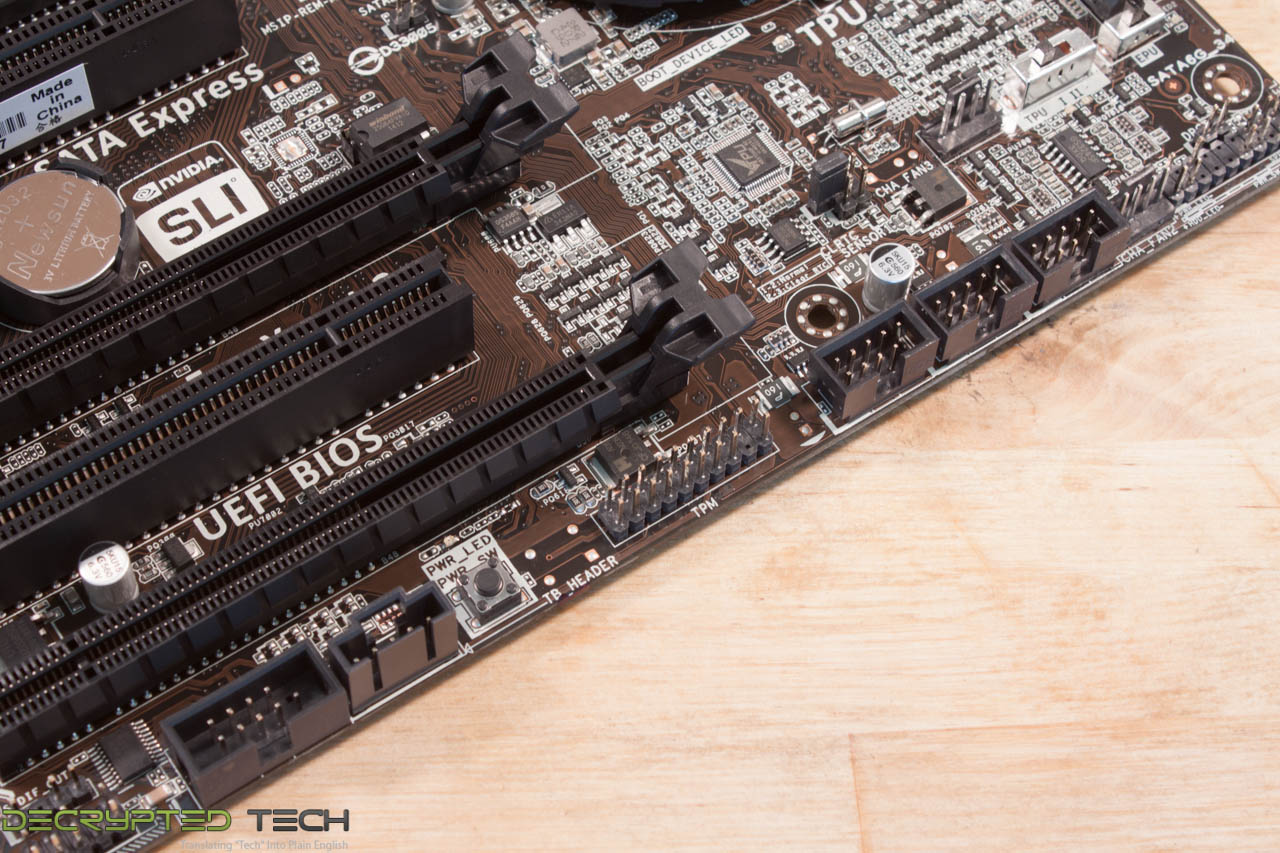
For storage options you get 4 SATA 3.0 (6GB/s) ports and a SATA Express port (Asus says this port is compatible with 2x SATA 6 ports). If you do not use the SATA Express port you do get an additional 2 SATA 3.0 ports. These are in their own housing and clearly broken out from the other ports on the board. We also mentioned the M.2 SATA PCie port just under the CPU socket, considering the positioning of the Z97-A these are some pretty impressive storage options.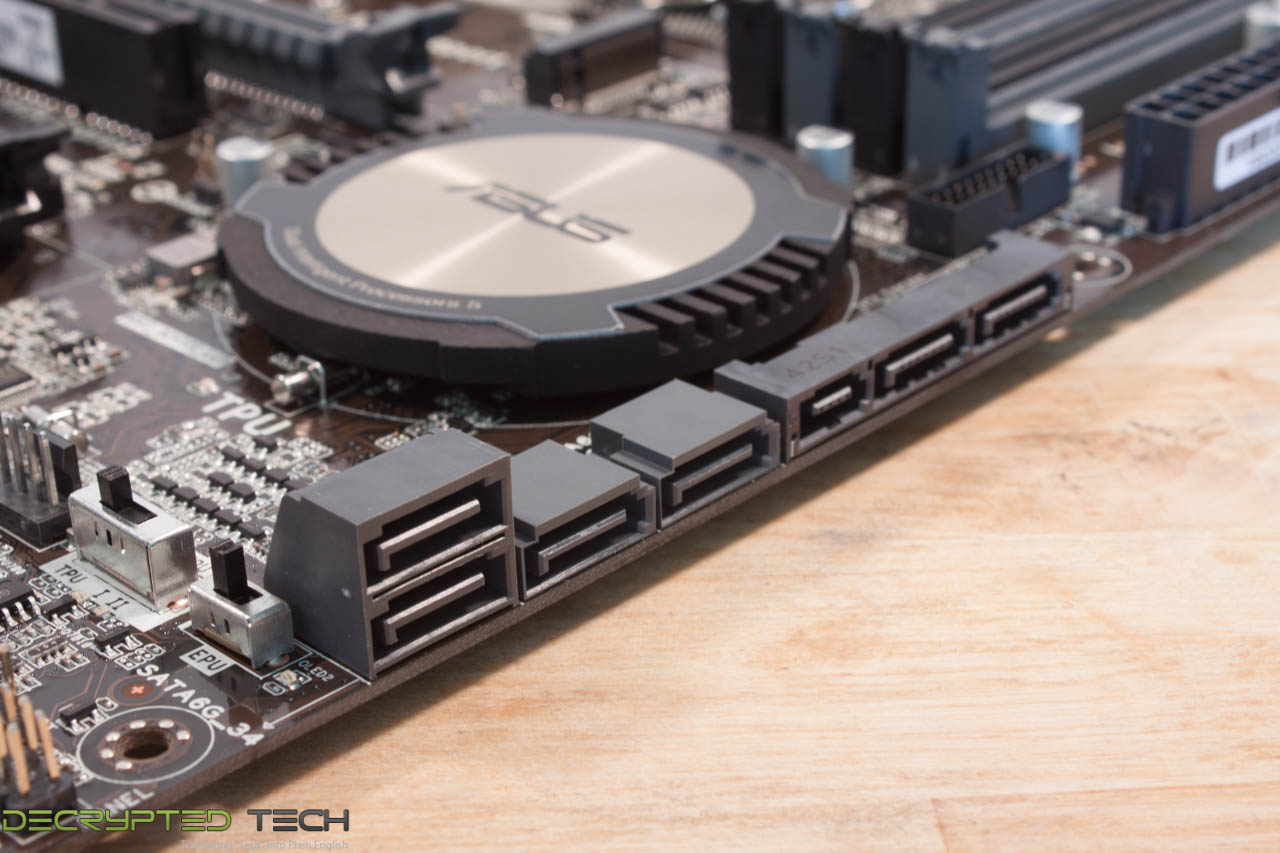
Flipping the board around to the I/O ports we see another departure from the norm. Instead of putting the PS/2 port at the top, Asus has pushed all of the video connectivity options to the top and moved everything down a little. The rest of the I/O options are pretty normal.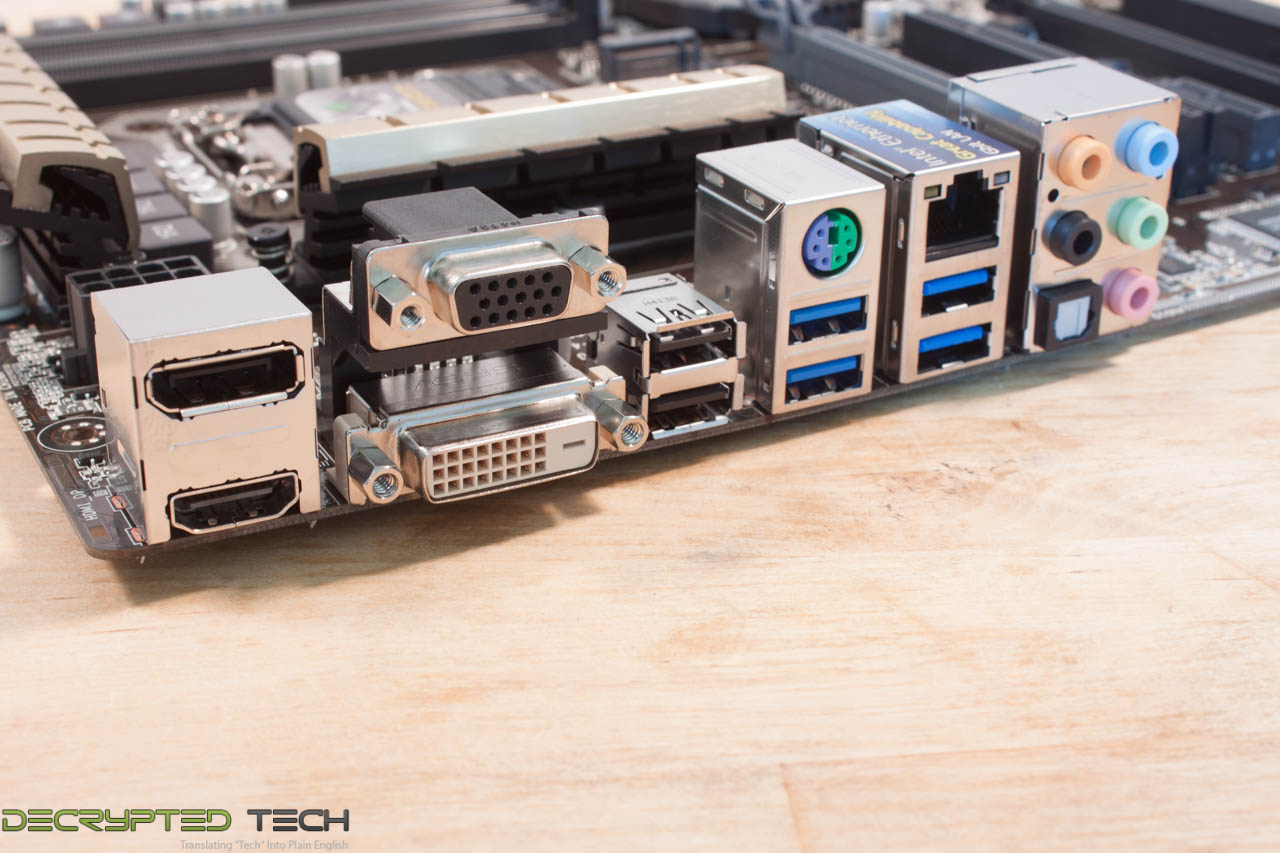
All-in-all the Z97-A looks to be an impressive board with a new design philosophy. Now we need to see if all of this can come together to give us a good performer or if it is just a bundle of cool features that do not work well together.



